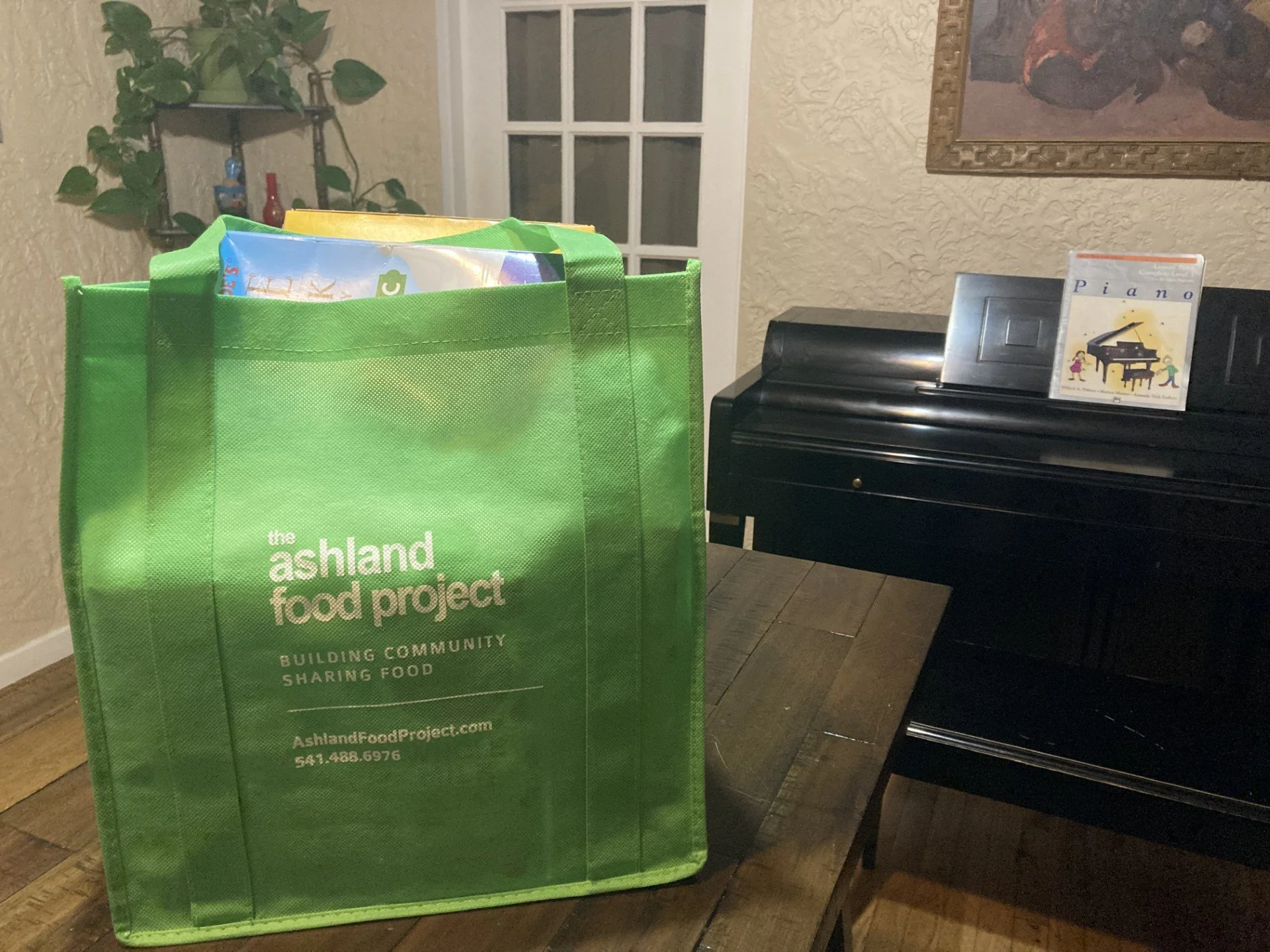Feeding Two Birds with One Bag - Council Corner - February 25, 2025
This Council Corner was printed by Ashland.news on February 25, 2025.
The emergency warning coming across my cell phone in early December because of the earthquake off the coast of Northern California was my first reminder in quite some time that having enough food to manage through an emergency is critical.
The second reminder was when the warm rain was falling in late December, and I started hearing whispers of “rain on snow events” and the “flood of ’97.” Those of us who were Ashlanders at the time remember it well and many were watching the forecast carefully to see if we might be heading toward another serious flood.
These potential emergencies were on my mind when a friend and I landed on the topic of emergency food supplies in a recent conversation. I mentioned what I do to make sure my emergency food doesn’t get stale, and she encouraged me to share my system. So here goes.
I have a decent stock of emergency food because I am fortunate enough to be able to buy it, but also because I was raised in a rural community by people who were serious about self-reliance, so keeping a stocked pantry is a deeply ingrained habit.
All of that is to say that I don’t worry too much about having enough food in the pantry. Instead, my problem is food going bad because it’s left in the pantry too long – particularly since the food I buy for emergencies isn’t the same food I buy for day-to-day use.
I expect that’s true of many people in our community who like to eat fresh vegetables and keep their distance from processed foods when possible. But when it comes to emergency stores, shelf stable foods are the ticket.
Coincidentally, shelf stable foods are also the ticket at the food bank and therein lies the magic.
This is what I do:
I take my green bag from the Ashland Food Project to the store and fill it with emergency food. When I get home, I rotate my stock by putting this new food in the back of the emergency supply section of my pantry like grocery stores do.
Then, when I get the notice that the Ashland Food Project is coming around for their next bag pick up, I fill my green bag from the front of the pantry, taking the older (but not yet expired – and that’s important!) food and donating it while it is still good. Then I hustle to the store with my green bag and replace whatever I just donated.
In this way, I feed two birds with one bag – making sure I have two weeks’ worth of unexpired emergency food at all times and helping my neighbors who do not have enough to eat. This system has the added benefit of making me consider my emergency supplies on a regular basis so I can adjust what I’m buying over time to create a balanced emergency food supply.
In an emergency, the need across our community is likely to overwhelm emergency services unless each of us is doing what we can to be self-reliant in our own homes. So, those of us who have the space in our household budgets to stock up on food need to make sure that we have enough food to last at least two weeks if we experience an earthquake, flood, severe winter storm, wildfire or other emergencies.
Being self-reliant when it comes to food in an emergency is a great way to help Ashland be resilient as a community, reduce strain on emergency services, and protect our low-income neighbors who are likely to need more assistance.
If these are things you value, make sure you stock up on food and consider rotating it through to the food bank through the Ashland Food Project. Sign up at AshlandFoodProject.com. If you can stock up even more than two weeks, please consider doing so to be able to help your neighbors if the need arises.
Thanks for all you do to be prepared for an emergency. “We are Better Together!”
(For information on emergency preparedness, such as signing up for emergency alerts, knowing your evacuation zones and packing a go-bag, visit ashlandoregon.gov/BetterPrepared.)

